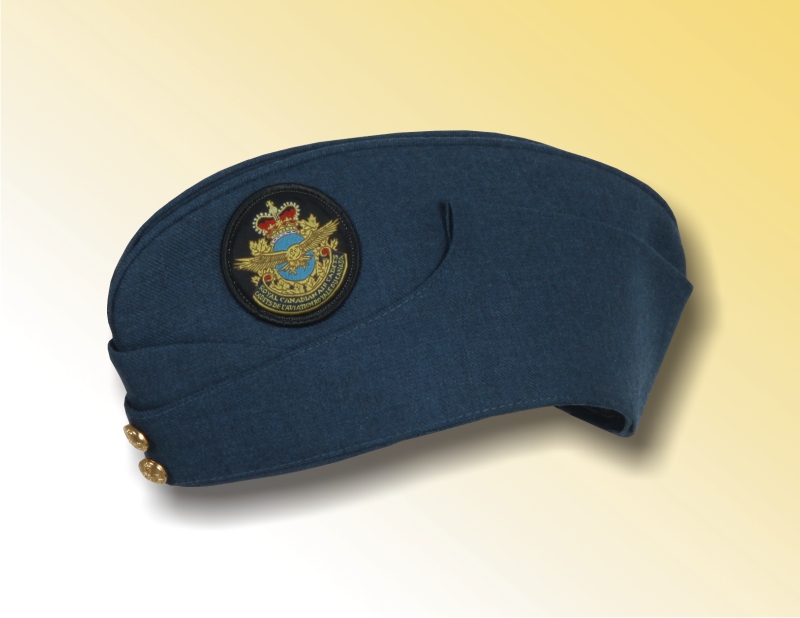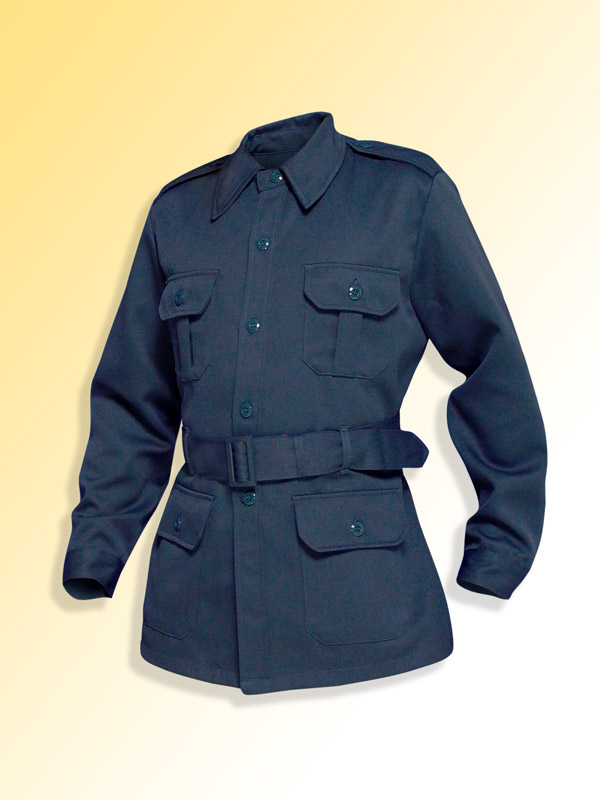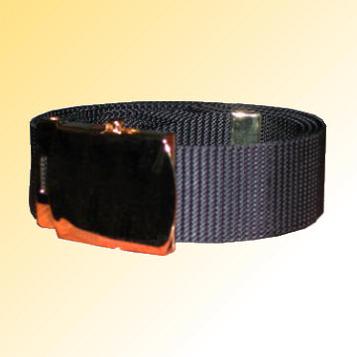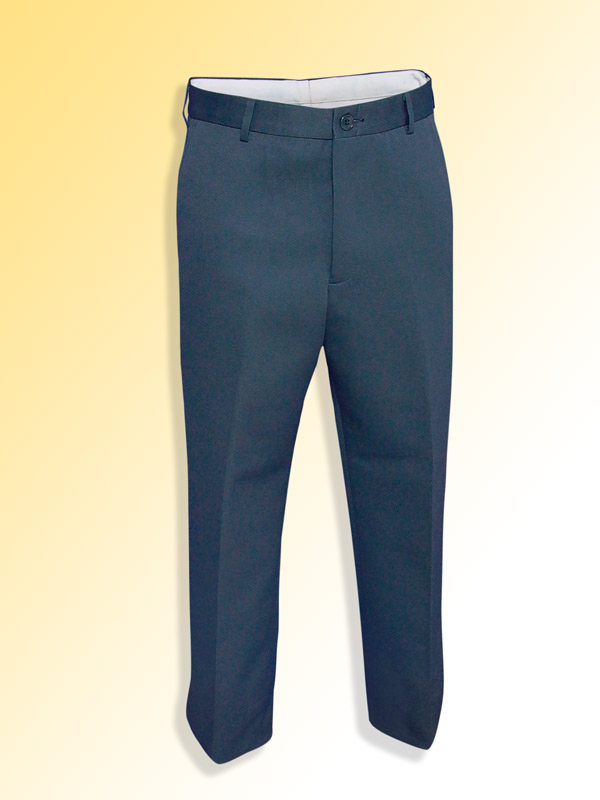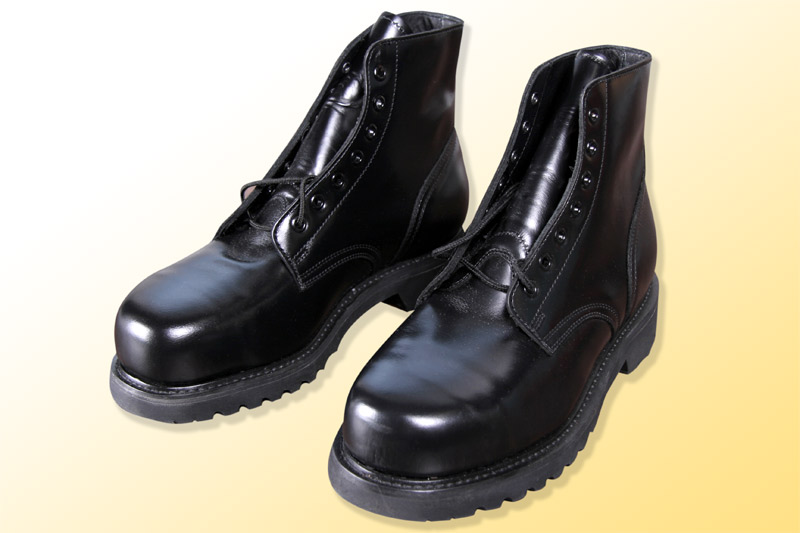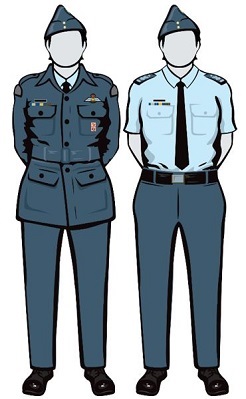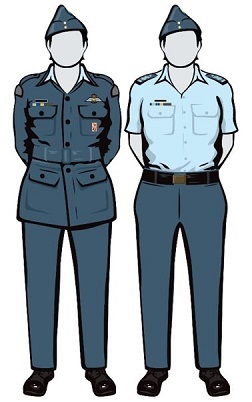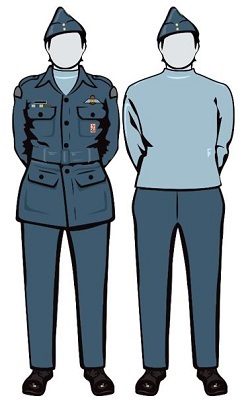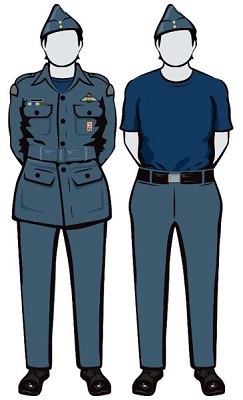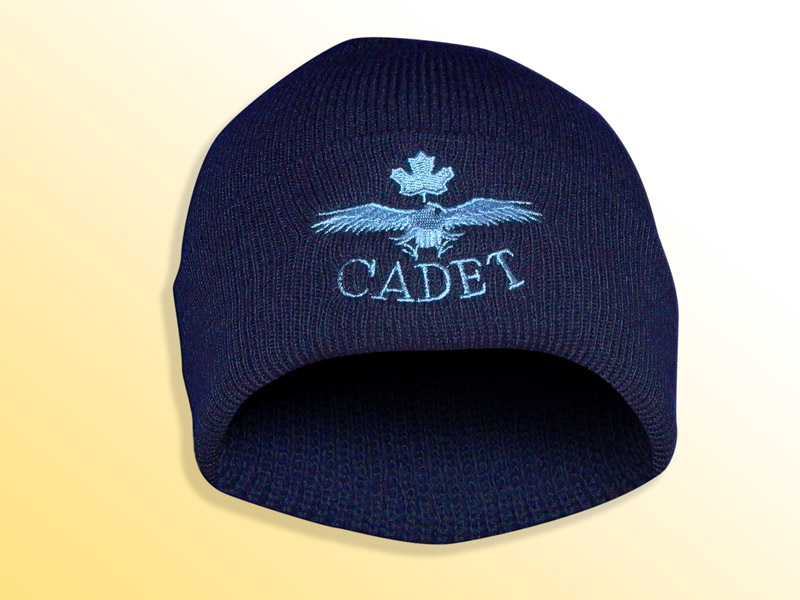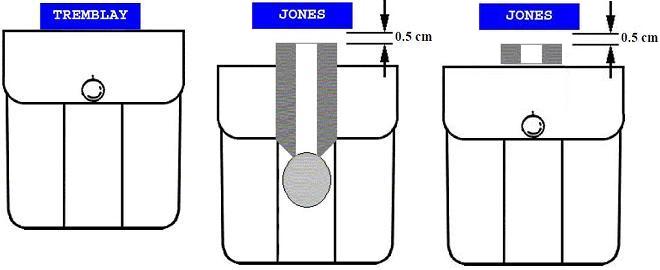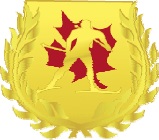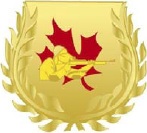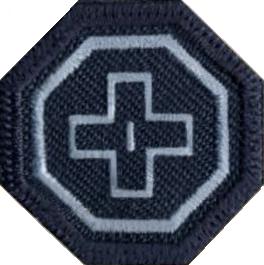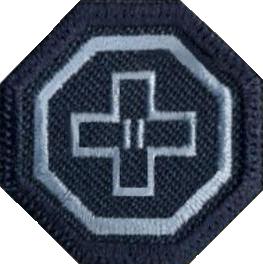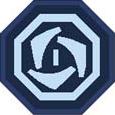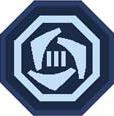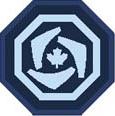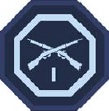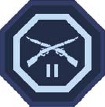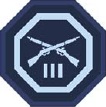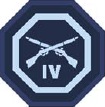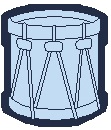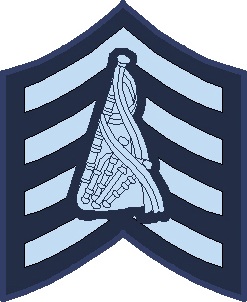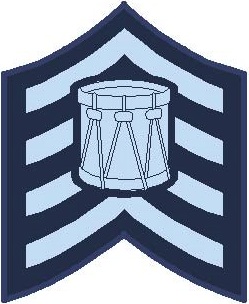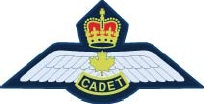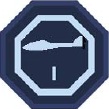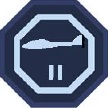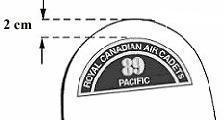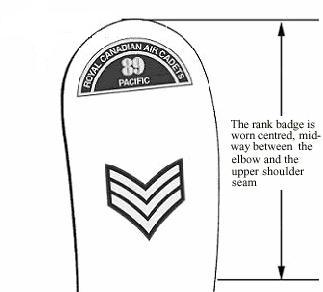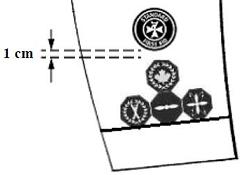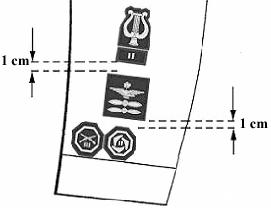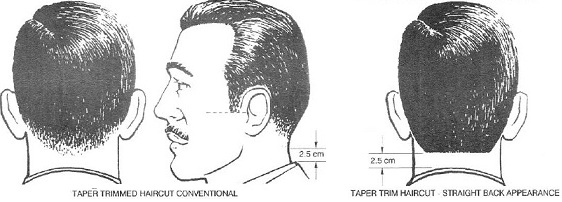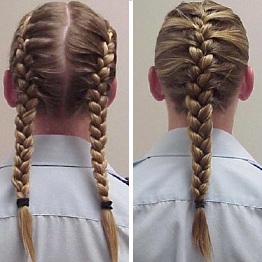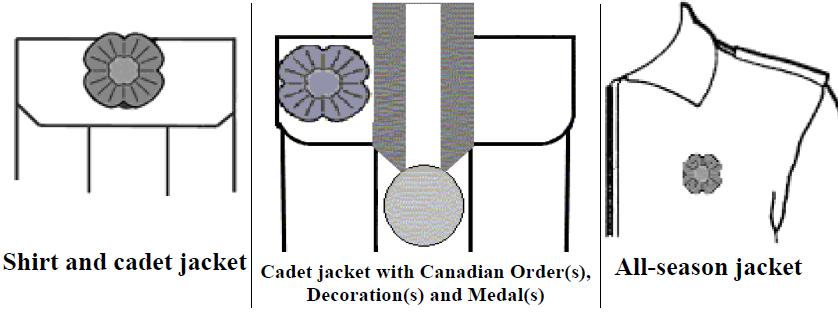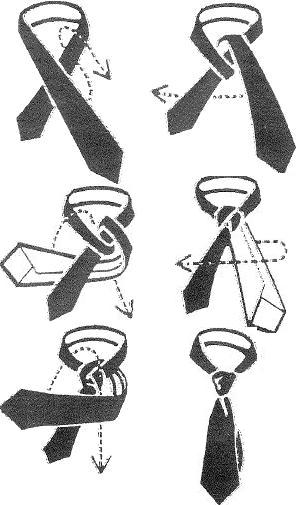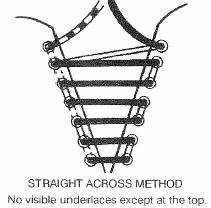|
This page provides access to information on the Cadet program and its regulations. This information is applicable across all Squadrons in Canada. For more specific information on the operation of this Squadron, see the Training - Local page.
Conduct, Discipline and Positive Social Relations for Youth
The Cadet Program is a relevant and proactive youth development organization, offering
a diverse program for Canada's youth, preparing them to become the leaders of tomorrow
through a set of fun, challenging, well-organized and safe activities.
There are expectations of the conduct of personnel that must be clearly understood and
abided by.
CONDUCT AND DISCIPLINE: The approach to encouraging good conduct and discipline in the Air Cadet programme is designed to reach a win-win and give all people an opportunity to participate.
POSITIVE SOCIAL RELATIONS FOR YOUTH: training prepares cadets to interact comfortably within the community, interact positively with others, exercise sound judgment, accept personal responsibility for actions and choices, deal with interpersonal conflict, and seek assistance from available resources when needed. Two pamphlets with important information for Cadets are:
Promotions
One of the incentives that many Cadets strive for is earning higher levels of responsibility
and authority. Service, training and performance is recognized through a system of ranks
that has a nationally set series of criteria.
Uniform Resources
A source of great pride for many Cadets, the uniform is an excellent tool for teaching
Cades about precision and care.
Training Resources
There are many mandatory and optional subjects covered within the Cadet Training program. This section
includes a number of resources for Cadets on Training.
BAND: This is a challenging and rewarding opportunity for Cadets to learn a musical instrument. Cadets in Squadrons that do not have a band are eligible to apply for a music summer training course.
 The Chapter 14 - Band Drill is an add-on to the Canadian Forces Drill Manual (A-PD-201-000) the explains drill for military and pipe bands. Please note: This file is 5.2 MB - it may take a while to download. The Chapter 14 - Band Drill is an add-on to the Canadian Forces Drill Manual (A-PD-201-000) the explains drill for military and pipe bands. Please note: This file is 5.2 MB - it may take a while to download.
 Military Band Resources: Military Band Resources:
 The CCP 166 - modified 10-2004, is the Cadet Music Theory Program (A-CR-CCP-166/PT-004) document for the Cadet program. The CCP 166 - modified 10-2004, is the Cadet Music Theory Program (A-CR-CCP-166/PT-004) document for the Cadet program.
 The The Air Cadet March Book - modified 9-200, is an extensive resource (1275 pages), originally written in 1997. It contains military band theory and many music scores. Please note: This file is 86 MB - it WILL take time to download, be sure your device has adequate space available before downloading. The The Air Cadet March Book - modified 9-200, is an extensive resource (1275 pages), originally written in 1997. It contains military band theory and many music scores. Please note: This file is 86 MB - it WILL take time to download, be sure your device has adequate space available before downloading.
 The Air Cadet Ceremonial Card - modified 2-2013, contains the score for common ceremonial music. The Air Cadet Ceremonial Card - modified 2-2013, contains the score for common ceremonial music.
 The Cadet Complete Score - modified 6-2006, is the score for the Cadet - Dedicated to the Canadian Cadets. The Cadet Complete Score - modified 6-2006, is the score for the Cadet - Dedicated to the Canadian Cadets.
 The God Save The Queen - modified 6-2006, is the full score for God Save The Queen. The God Save The Queen - modified 6-2006, is the full score for God Save The Queen.
 The The Maple Leaf Forever - modified 6-2006, is the score for The Maple Leaf Forever. The The Maple Leaf Forever - modified 6-2006, is the score for The Maple Leaf Forever.
 The Heart of Oak - modified 6-2006, is the score for the official march of the Royal Canadian Navy. The Heart of Oak - modified 6-2006, is the score for the official march of the Royal Canadian Navy.
 Pipe Band Resources: Pipe Band Resources:
 The Bagpipe Level 1 - modified 11-2012, is the first level of the bagpipe reference manual (A-CR-CCP-912/PW-001). The Bagpipe Level 1 - modified 11-2012, is the first level of the bagpipe reference manual (A-CR-CCP-912/PW-001).
 The Bagpipe Level 2 - modified 11-2012, is the second level of the bagpipe reference manual. The Bagpipe Level 2 - modified 11-2012, is the second level of the bagpipe reference manual.
 The Bagpipe Level 3 - modified 11-2012, is the third level of the bagpipe reference manual. The Bagpipe Level 3 - modified 11-2012, is the third level of the bagpipe reference manual.
 The Bagpipe Level 4 - modified 11-2012, is the fourth level of the bagpipe reference manual. The Bagpipe Level 4 - modified 11-2012, is the fourth level of the bagpipe reference manual.
 The Bagpipe Level 5 - modified 10-2013, is the fifth level of the bagpipe reference manual. The Bagpipe Level 5 - modified 10-2013, is the fifth level of the bagpipe reference manual.
 The Bass Tenor Level 1 - modified 11-2012, is the first level of the bass drum and tenor drum reference manual (A-CR-CCP-914/PW-001). The Bass Tenor Level 1 - modified 11-2012, is the first level of the bass drum and tenor drum reference manual (A-CR-CCP-914/PW-001).
 The Bass Tenor Level 2 - modified 11-2012, is the second level of the bass drum and tenor drum reference manual. The Bass Tenor Level 2 - modified 11-2012, is the second level of the bass drum and tenor drum reference manual.
 The Bass Tenor Level 3 - modified 11-2012, is the third level of the bass drum and tenor drum reference manual. The Bass Tenor Level 3 - modified 11-2012, is the third level of the bass drum and tenor drum reference manual.
 The Bass Tenor Level 4 - modified 11-2012, is the fourth level of the bass drum and tenor drum reference manual. The Bass Tenor Level 4 - modified 11-2012, is the fourth level of the bass drum and tenor drum reference manual.
 The Snare Level 1 - modified 11-2012, is the first level of the snare drum reference manual (A-CR-CCP-913/PW-001). The Snare Level 1 - modified 11-2012, is the first level of the snare drum reference manual (A-CR-CCP-913/PW-001).
 The Snare Level 2 - modified 11-2012, is the second level of the snare drum reference manual. The Snare Level 2 - modified 11-2012, is the second level of the snare drum reference manual.
 The Snare Level 3 - modified 11-2012, is the third level of the snare drum reference manual. The Snare Level 3 - modified 11-2012, is the third level of the snare drum reference manual.
 The Snare Level 4 - modified 11-2012, is the fourth level of the snare drum reference manual. The Snare Level 4 - modified 11-2012, is the fourth level of the snare drum reference manual.
BIATHLON: An exciting winter sport, biathlon combines the activities of cross-country skiing and small bore
marksmanship.
FLYING SCHOLARSHIP: Cadets wanting to work towards a pilot licence will work hard to achieve this incredible accomplishment.
|
 Cadets interested in working towards a Glider or Power Pilot
Licence will study at the Flying Scholarship Ground School at their Squadron from September through
January. Cadets interested in working towards a Glider or Power Pilot
Licence will study at the Flying Scholarship Ground School at their Squadron from September through
January.
 Early in January, Cadets write the qualifying exam
along with Cadets from neighbouring Squadrons. In fact, all Air Cadets in Canada write the exam on the same day! Early in January, Cadets write the qualifying exam
along with Cadets from neighbouring Squadrons. In fact, all Air Cadets in Canada write the exam on the same day!
 Cadets who earn 60% or greater on the exam will go on to the
next phase in the selection process - the interview. Interviews are held in February and are conducted
by experienced pilot training members of the Cadet Instructors Cadre (members of the Canadian Forces) as well as
representatives from the Air Cadet League of Canada. Cadets who earn 60% or greater on the exam will go on to the
next phase in the selection process - the interview. Interviews are held in February and are conducted
by experienced pilot training members of the Cadet Instructors Cadre (members of the Canadian Forces) as well as
representatives from the Air Cadet League of Canada.
 The Regional Cadet Support Unit will evaluate the results as
well as the application material submitted and selections will be announced in May. The Regional Cadet Support Unit will evaluate the results as
well as the application material submitted and selections will be announced in May.
 Cadets selected as recipients of the scholarship will go to
Summer Training Centres to complete their ground school and the flight time necessary to earn either a Transport Canada
Glider or Power Pilot licence. Each year over 300 Glider and over 200 Power Pilot licences are earned across Canada.
AND it is important to note that Cadets are PAID to attend these courses! Cadets selected as recipients of the scholarship will go to
Summer Training Centres to complete their ground school and the flight time necessary to earn either a Transport Canada
Glider or Power Pilot licence. Each year over 300 Glider and over 200 Power Pilot licences are earned across Canada.
AND it is important to note that Cadets are PAID to attend these courses!
 While the training at the Squadron is conducted from September
to January, Cadets are encouraged to continue studying year round. The Flying
Scholarship Program Instruction Package (PIP) (updated in 2017) contains a wealth of information to help. Download
all of those files (over 200MB) onto a computer and start with Welcome.ppsx While the training at the Squadron is conducted from September
to January, Cadets are encouraged to continue studying year round. The Flying
Scholarship Program Instruction Package (PIP) (updated in 2017) contains a wealth of information to help. Download
all of those files (over 200MB) onto a computer and start with Welcome.ppsx
|
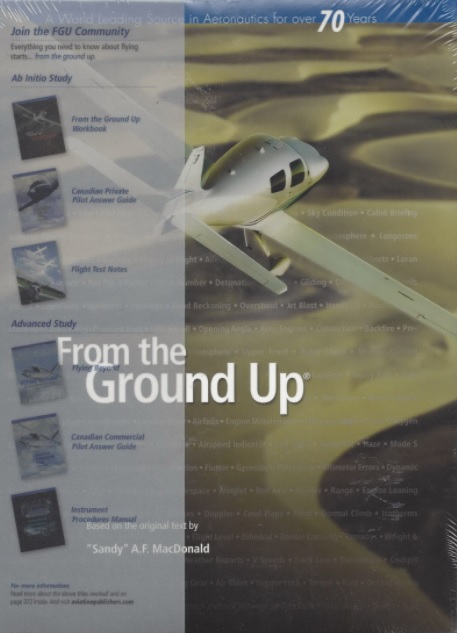
The From the Ground Up manual and the accompanying workbook, are great resources for
pilots in training.
|
ORIENTEERING: An essential part of survival skills taught to Cadets is navigation using map and compass. This is called orienteering.
 How to use a Compass - easy compass navigation with the Silva 1-2-3 system How to use a Compass - easy compass navigation with the Silva 1-2-3 system
This video was found online - many are available to show examples of how to navigate with a map and compass.
 How to Read the Map How to Read the Map
This video was found online - many are available to show examples of how to navigate with a map and compass.
 What is an orienteering map? What is an orienteering map?
This video was found online - many are available to show examples of how to navigate with a map and compass.
 How to use the Compass How to use the Compass
This video was found online - many are available to show examples of how to navigate with a map and compass.
 How to start your Course How to start your Course
This video was found online - many are available to show examples of how to navigate with a map and compass.
 Orienteering for beginners Orienteering for beginners
This video was found online - many are available to show examples of how to navigate with a map and compass.
 Aiming Off Aiming Off
This video was found online - many are available to show examples of how to navigate with a map and compass.
 Attach Points Attach Points
This video was found online - many are available to show examples of how to navigate with a map and compass.
 Catching Feature – 1 Catching Feature – 1
This video was found online - many are available to show examples of how to navigate with a map and compass.
 Collecting Features Collecting Features
This video was found online - many are available to show examples of how to navigate with a map and compass.
 Handrails Handrails
This video was found online - many are available to show examples of how to navigate with a map and compass.
 Xperience orienteering Xperience orienteering
This video was found online - many are available to show examples of how to navigate with a map and compass.
Training Resources for Senior Cadets
These are a few resources in support of the Training program that will be of value to senior Cadets.
TRAINING ORGANIZATION: The content taught within the Local and Summer training programs are designed and at the
national level. These are detailed as follows:
 Qualification Standard and Plan (QSP) - These documents are the primary authority governing the development, implementation, conduct and evaluation of the training and standards to qualify as a Cadet in the Levels of the training program: Qualification Standard and Plan (QSP) - These documents are the primary authority governing the development, implementation, conduct and evaluation of the training and standards to qualify as a Cadet in the Levels of the training program:
The full QSP documents are available from the Squadron Training Officer. The versions posted below are redacted to remove any specifics on the actual evaluations.
- Proficiency Level 1 - Qualification Standard and Plan - A-CR-CCP-801/PG-001
- Proficiency Level 2 - Qualification Standard and Plan - A-CR-CCP-802/PG-001
- Proficiency Level 3 - Qualification Standard and Plan - A-CR-CCP-803/PG-001 (this is the redacted version, with the tests removed. The original full document is available from the Sqn TrgO)
- Proficiency Level 4 - Qualification Standard and Plan - A-CR-CCP-804/PG-001 (this is the redacted version, with the tests removed. The original full document is available from the Sqn TrgO)
- Proficiency Level 5 - Qualification Standard and Plan - A-CR-CCP-805/PG-001
- Proficiency Level 5 - Logbook - A-CR-CCP-805/PW-001
 Instructional Guides (IG) - These documents are to be used by Royal Canadian Air Cadet Squadrons in conjunction with other resources to conduct the Proficiency Level Program. The IGs provides instructors with the base means from which to deliver training. Before reading any of the IGs, here are some definitions to help you to understand lesson assignments: Instructional Guides (IG) - These documents are to be used by Royal Canadian Air Cadet Squadrons in conjunction with other resources to conduct the Proficiency Level Program. The IGs provides instructors with the base means from which to deliver training. Before reading any of the IGs, here are some definitions to help you to understand lesson assignments:
- Performance Objective (PO) - the subject or course of study.
- Enabling Objective (EO) - the individual lesson in a PO.
- Mandatory (M) - this specific lesson (EO) is required and will be taught.
- Complimentary (C) - this specific lesson (EO) is optional and may be taught.
For example, an instructor could be assigned M309.04. Here is that code broken down:

The full IG documents are available from the Squadron Training Officer. The IG documents have been broken down to display below, each PO separately. Select a Level below and click on the PO # to view the Instructional Guide.
| PO # |
Subject |
| 100 |
Introduction to Level 1 |
| X01 |
Participate in Citizenship Activities (see QSP for more details) |
| X02 |
Perform Community Service (see QSP for more details) |
| 103 |
Participate as a Member of a Team |
| X04 |
Track Participation in Physical Activities (see QSP for more details) |
| X05 |
Participate in Physical Activities (see QSP for more details) |
| 106 |
Fire the Cadet Air Rifle |
| 107 |
Serve in an Air Cadet Squadron |
| 108 |
Perform Drill Movements During an Annual Ceremonial Review |
| 111 |
Participate in Recreational Summer Biathlon Activities |
| X20 |
Participate in Canadian Forces (CF) Familiarization Activities (see QSP for more details) |
| 121 |
Participate in Canadian Aviation, Aerospace and Aerodrome Operations Community Familiarization Activities |
| 129 |
Communicate Using the Phonetic Alphabet and Numbers |
| 130 |
Participate in Aviation Activities |
| 140 |
Participate in Aerospace Activities |
| 160 |
Participate in Aerodrome Operations Activities |
| 170 |
Discuss Aircraft Maintenance and Manufacturing |
| 190 |
Participate in an Aircrew Survival Exercise |
| PO # |
Subject |
| 200 |
Introduction |
| X01 |
Participate in Citizenship Activities (see QSP for more details) |
| X02 |
Perform Community Service (see QSP for more details) |
| 203 |
Demonstrate Leadership Attributes Within a Peer Setting |
| X04 |
Track Participation in Physical Activities (see QSP for more details) |
| X05 |
Participate in Physical Activities (see QSP for more details) |
| 206 |
Fire the Cadet Air Rifle During Recreational Marksmanship |
| 207 |
Serve in an Air Cadet Squadron |
| 208 |
Execute Drill as a Member of a Squad |
| 211 |
Participate in Competitive Summer Biathlon Activities |
| X20 |
Particiate in Canadian Forces (CAF) Familiarization (see QSP for more details) |
| 230 |
Discuss Canadian Aviation History |
| 231 |
Explain Principles of Flight |
| 232 |
Identify Characteristics of Piston Powered Aircraft |
| 240 |
Participate in Aerospace Activities |
| 260 |
Participate in Aerodrome Operations Activities |
| 270 |
Discuss Aircraft Manufacturing and Maintenance |
| 290 |
Participate in a Field Exercise |
| PO # |
Subject |
| 300 |
Introduction |
| X01 |
Participate in Citizenship Activities (see QSP for more details) |
| X02 |
Perform Community Service (see QSP for more details) |
| 303 |
Perform the Role of a Team Leader |
| X04 |
Track Participation in Physical Activities (see QSP for more details) |
| X05 |
Participate in Physical Activities (see QSP for more details) |
| 306 |
Fire the Cadet Air Rifle During Recreational Marksmanship |
| 307 |
Serve in an Air Cadet Squadron |
| 308 |
Direct a Flight Prior to a Parade |
| 309 |
Instruct a Lesson |
| 311 |
Participate in a Recreational Summer Biathlon Activity |
| X20 |
Particiate in Canadian Forces (CAF) Familiarization Activities (see QSP for more details) |
| 331 |
Describe Principles of Flight |
| 336 |
Identify Meteorological Conditions |
| 337 |
Demonstrate Air Navigation Skills |
| 340 |
Identify Aspects of Space Exploration |
| 360 |
Recognize Aspects of Aerodrome Operations |
| 370 |
Recognize Aspects of Aircraft Manufacturing and Maintenance |
| 390 |
Navigate a Route Using a Map and Compass |
| PO # |
Subject |
| 400 Intro |
Introduction |
| 400 PSRY |
Positive Social Relations for Youth |
| X01 |
Citizenship (see QSP for more details) |
| X02 |
Community Service (see QSP for more details) |
| 403 |
Act as a Team Leader |
| X04 |
Personal Fitness and Healthy Living (see QSP for more details) |
| X05 |
Physical Activities (see QSP for more details) |
| 406 |
Fire the Cadet Air Rifle During Recreational Marksmanship |
| 407 |
Serve in an Air Cadet Squadron |
| 408 |
Command a Flight on Parade |
| 409 |
Instruct a Lesson |
| X20 |
Particiate in Canadian Forces (CAF) Familiarization Activities (see QSP for more details) |
| 429 |
Communicate Using Radio Procedures for Aviation Transmission |
| 431 |
Explain Principles of Flight |
| 432 |
Describe Aiero Engine Systems |
| 436 |
Explain Aspects of Meteorology |
| 437 |
Explain Aspects of Air Navigation |
| 440 |
Discuss Aerospace Structures |
| 460 |
Describe Aerodrome Operations Career Opportunities |
| 470 |
Discuss Aspects of Aircraft Manufacturing and Maintenance |
| 490 |
Participate in an Aircrew Survival Exercise |
| PO # |
Subject |
| 500 |
Introduction |
| 501 |
Citizenship |
| 502 |
Community Service |
| 503 |
Leadership |
| 504 |
Participate in Cadet Fitness Assessment |
| 507 |
Serve in an Air Cadet Squadron |
| 509 |
Monitor Instruction |
| 530 |
Aviation - Fly a Cross-Country Flight Using a Flight Simulator |
| 540 |
Aerospace Technology |
| 560 |
Aviation in Canada |
| 570 |
Aircraft Manufacturing and Maintenance for Aerobatic Aircraft |
| 590 |
Aircrew Survival |
 Lesson Plan template is an excerpt from the Level 3 Instructional Techniques PO. It is a good resource for developing a new lesson plan. It includes a checklist to make sure you haven't forgotten anything. Lesson Plan template is an excerpt from the Level 3 Instructional Techniques PO. It is a good resource for developing a new lesson plan. It includes a checklist to make sure you haven't forgotten anything.
 Monitoring Form is a document that was designed based on the evaluation of instruction in Levels 3 and 4. Monitoring Form is a document that was designed based on the evaluation of instruction in Levels 3 and 4.
DRILL RESOURCES: Modelled after Canadian Forces Drill, a senior Cadet should be familiar with the appropriate references material for drill movements:
 The Canadian Armed Forces Manual of Drill and Ceremonial - A-PD-201-000/PT-000 (June 15, 2014 version), also known as the PD-201, is THE SOURCE for all things drill. Please note: This file is 25 MB - it will take time to download. The Canadian Armed Forces Manual of Drill and Ceremonial - A-PD-201-000/PT-000 (June 15, 2014 version), also known as the PD-201, is THE SOURCE for all things drill. Please note: This file is 25 MB - it will take time to download.
 Rifle Drill is done using the Lee Enfield rifle. The CATO 54-04 provides
direction for Air Cadets on how to do rifle drill. Another resource is the Royal Canadian Sea Cadets Manual of Drill and Ceremonial - A-CR-CCP-053/PT-001
(January 5, 2001 version) which includes additional information and many illustrations. Rifle Drill is done using the Lee Enfield rifle. The CATO 54-04 provides
direction for Air Cadets on how to do rifle drill. Another resource is the Royal Canadian Sea Cadets Manual of Drill and Ceremonial - A-CR-CCP-053/PT-001
(January 5, 2001 version) which includes additional information and many illustrations.
 Aide-Memoire Card - Preparing a Flight for Parade
is a quick reference for Cadets taking on a Flight Commander or Flight 2IC position on parade. Aide-Memoire Card - Preparing a Flight for Parade
is a quick reference for Cadets taking on a Flight Commander or Flight 2IC position on parade.
MARKSMANSHIP TRAINING RESOURCES: The marksmanship fundamentals are a great skill for Cadets to learn. The Senior
Cadets should be aware of the following resources:
 The CCM Air Rifle Training Aide Memoire
is an excellent summary of all things marksmanship. The CCM Air Rifle Training Aide Memoire
is an excellent summary of all things marksmanship.
 A very thorough document, the CCM Marksmanship Reference Manual
is the difinitive document for marksmanship training. A very thorough document, the CCM Marksmanship Reference Manual
is the difinitive document for marksmanship training.
PHYSICAL TRAINING RESOURCES: There is a great deal of sports and physical training in the Cadet program. Some resources
for a Senior Cadet to help Junior Cadets in their progress are:
 Physical Activity Tracker
is a form to track moderate to vigorous intensity physical activity time over a four weeks period. Physical Activity Tracker
is a form to track moderate to vigorous intensity physical activity time over a four weeks period.
 Personal Activity Plan template
is the annual form completed by Cadets in the planning of a healthy level of fitness. Personal Activity Plan template
is the annual form completed by Cadets in the planning of a healthy level of fitness.
ADMINISTRATIVE RESOURCES: While there are many administrative resources available, a good start for Senior Cadets are:
 Communicating in writing is a fundamental skill. The memo sample shows two examples of the memorandum format. Communicating in writing is a fundamental skill. The memo sample shows two examples of the memorandum format.
|

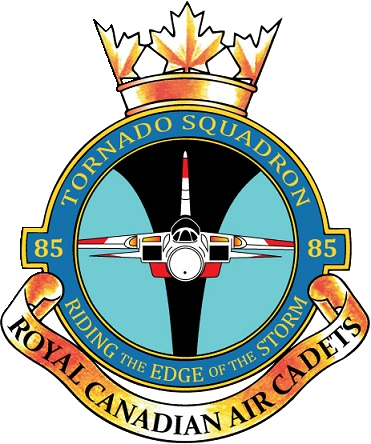






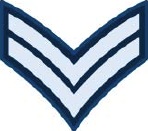
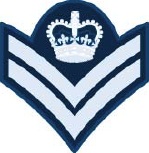
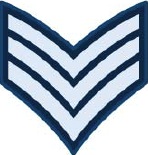

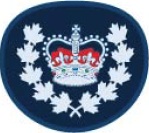
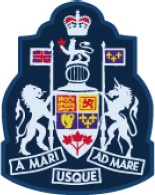
 The following table shows the most common Orders of Dress.
The following table shows the most common Orders of Dress.

